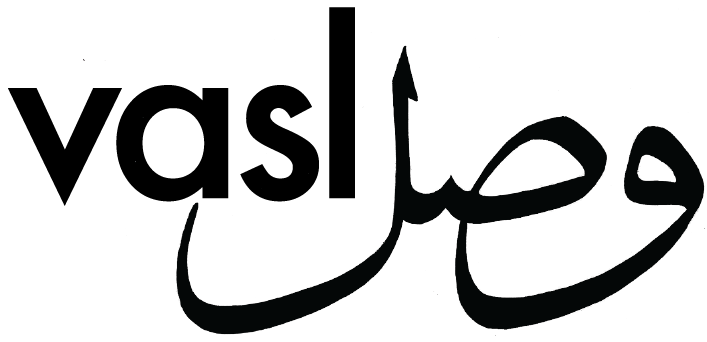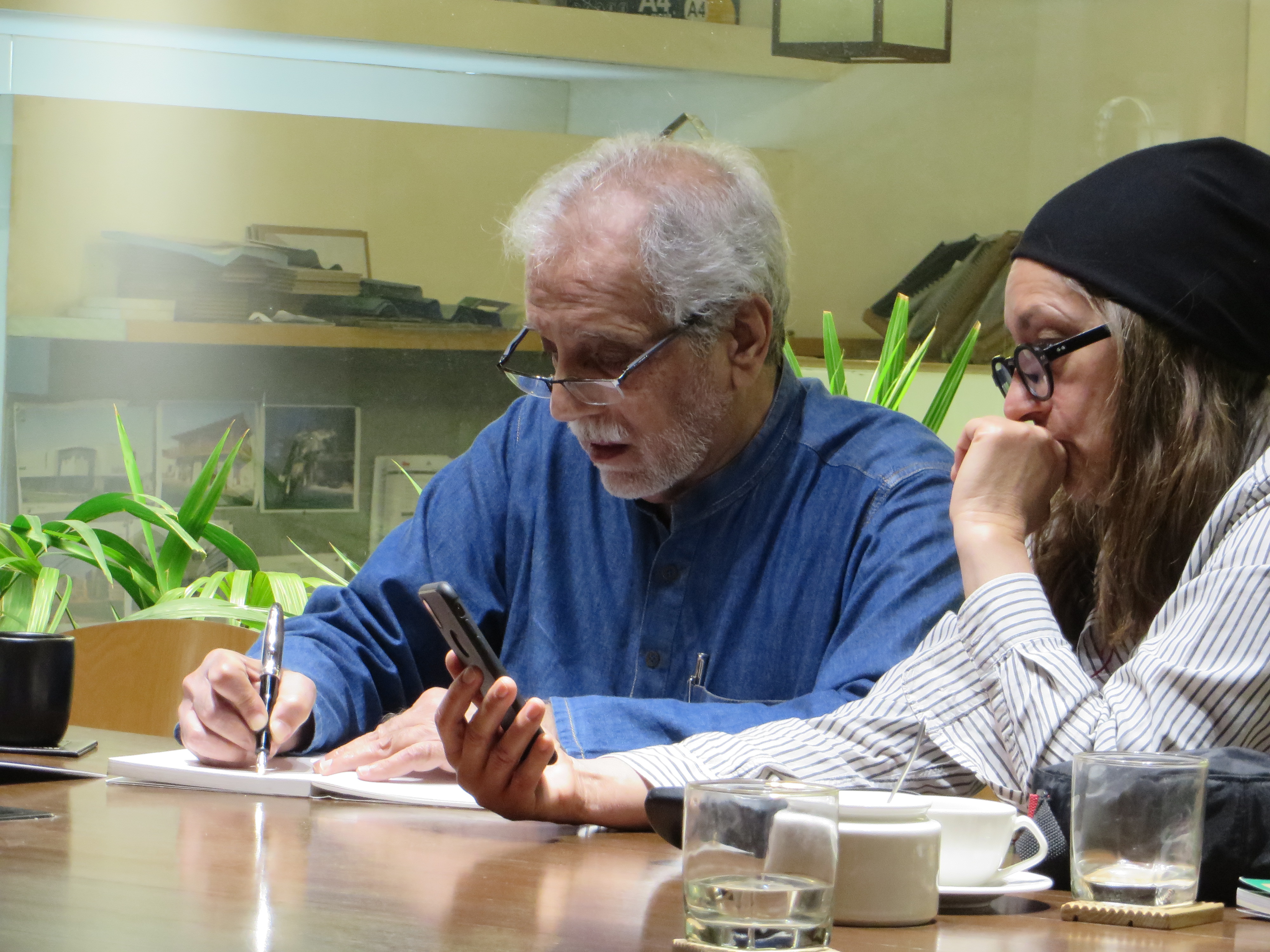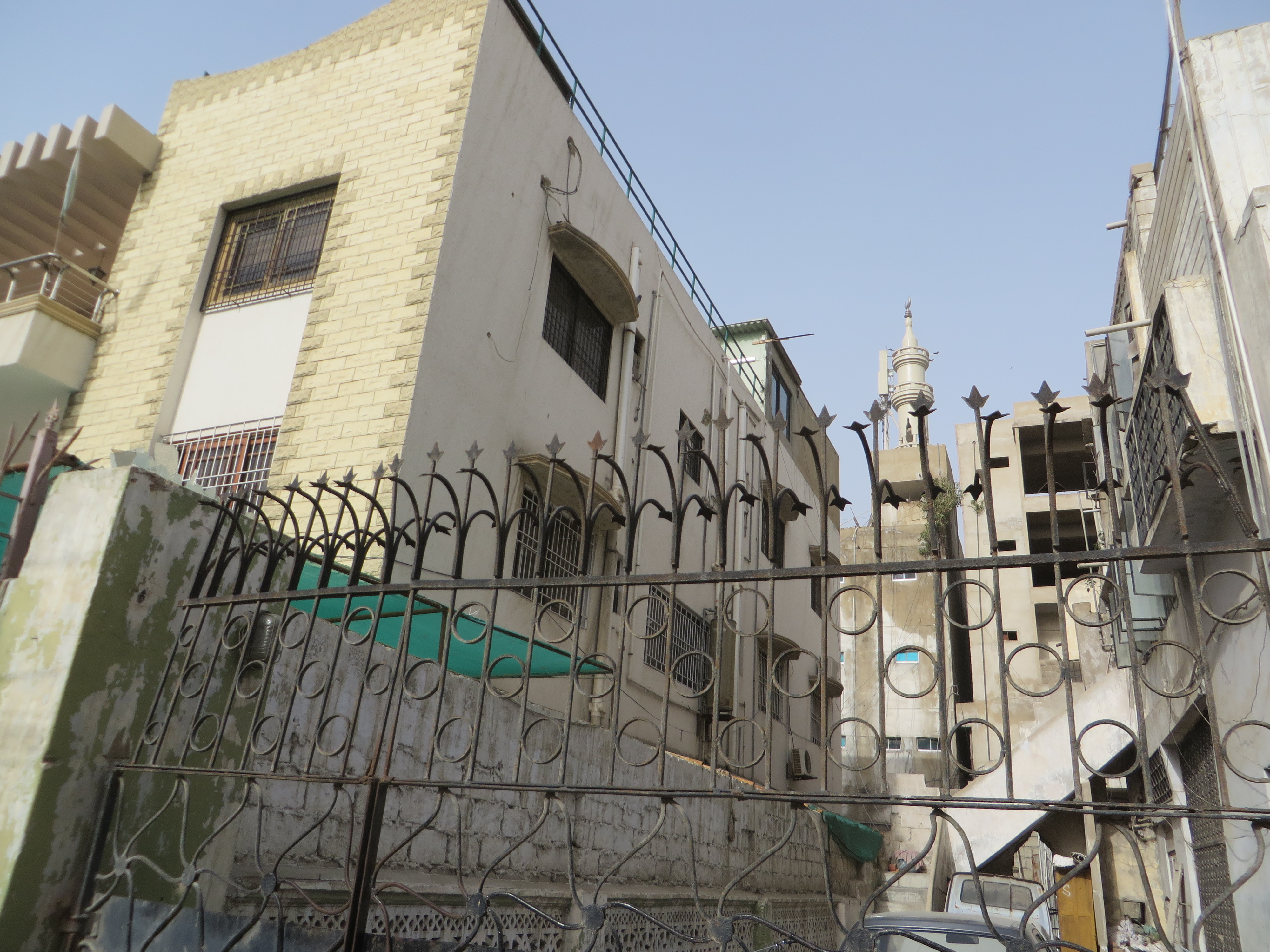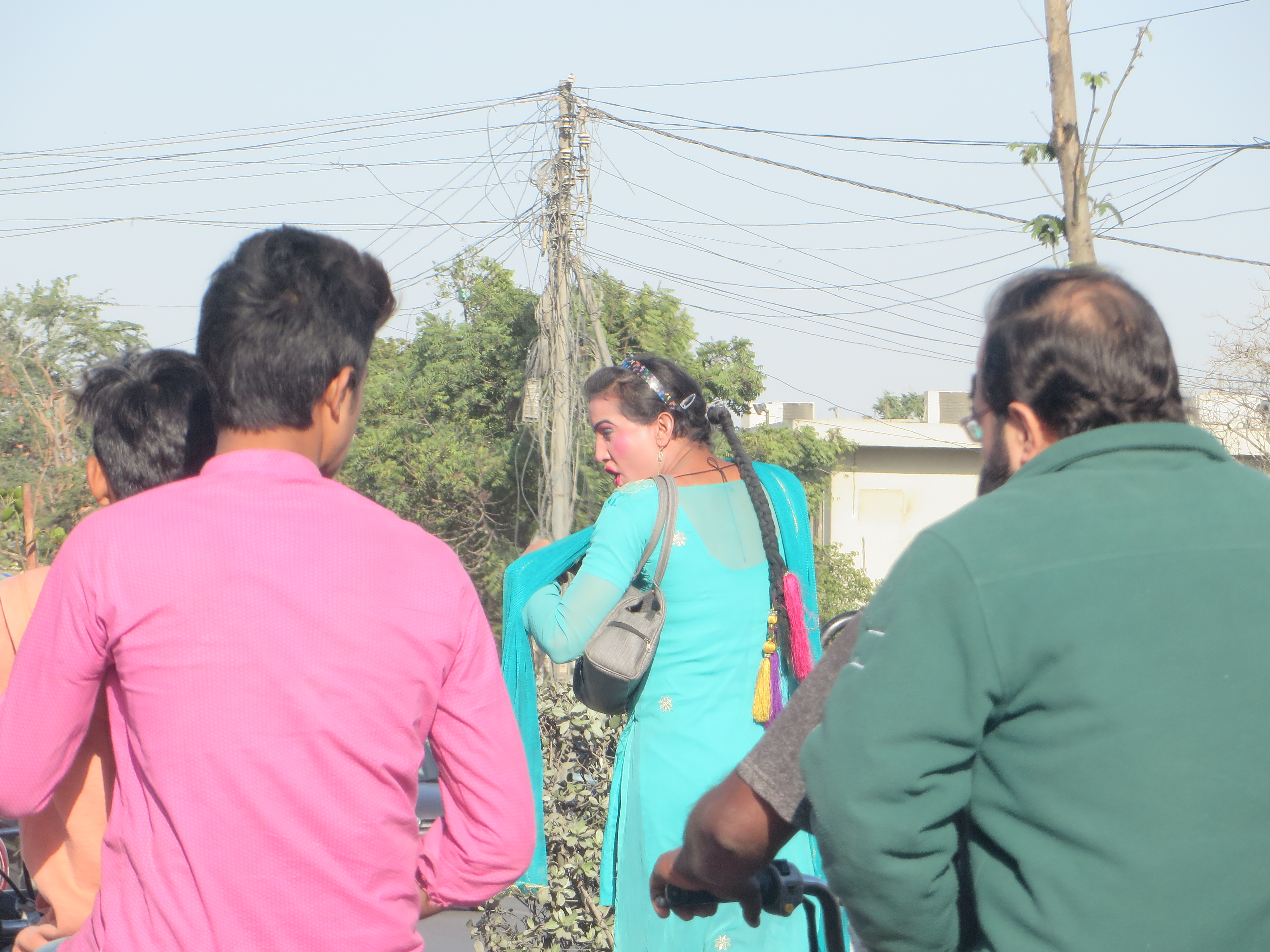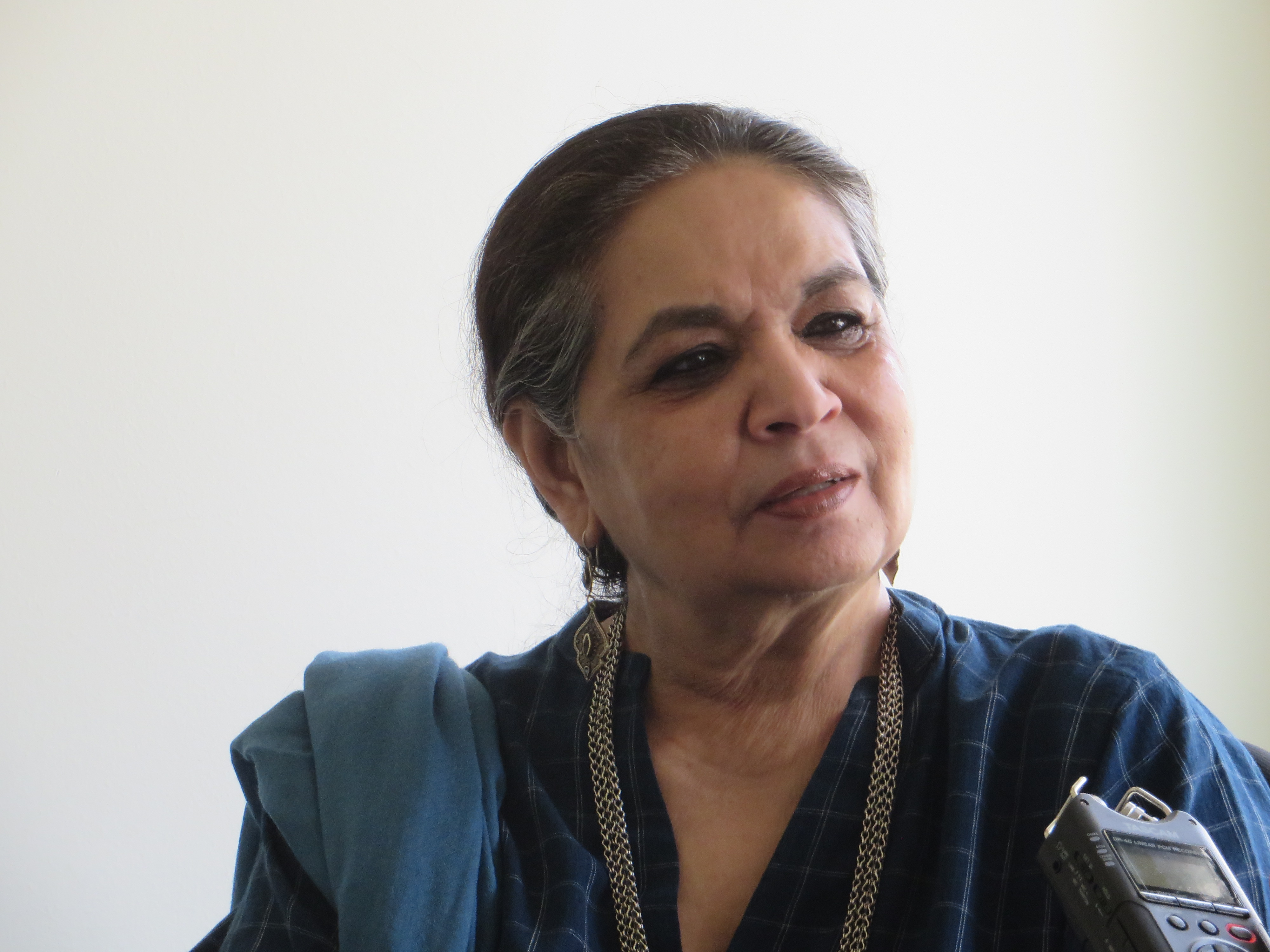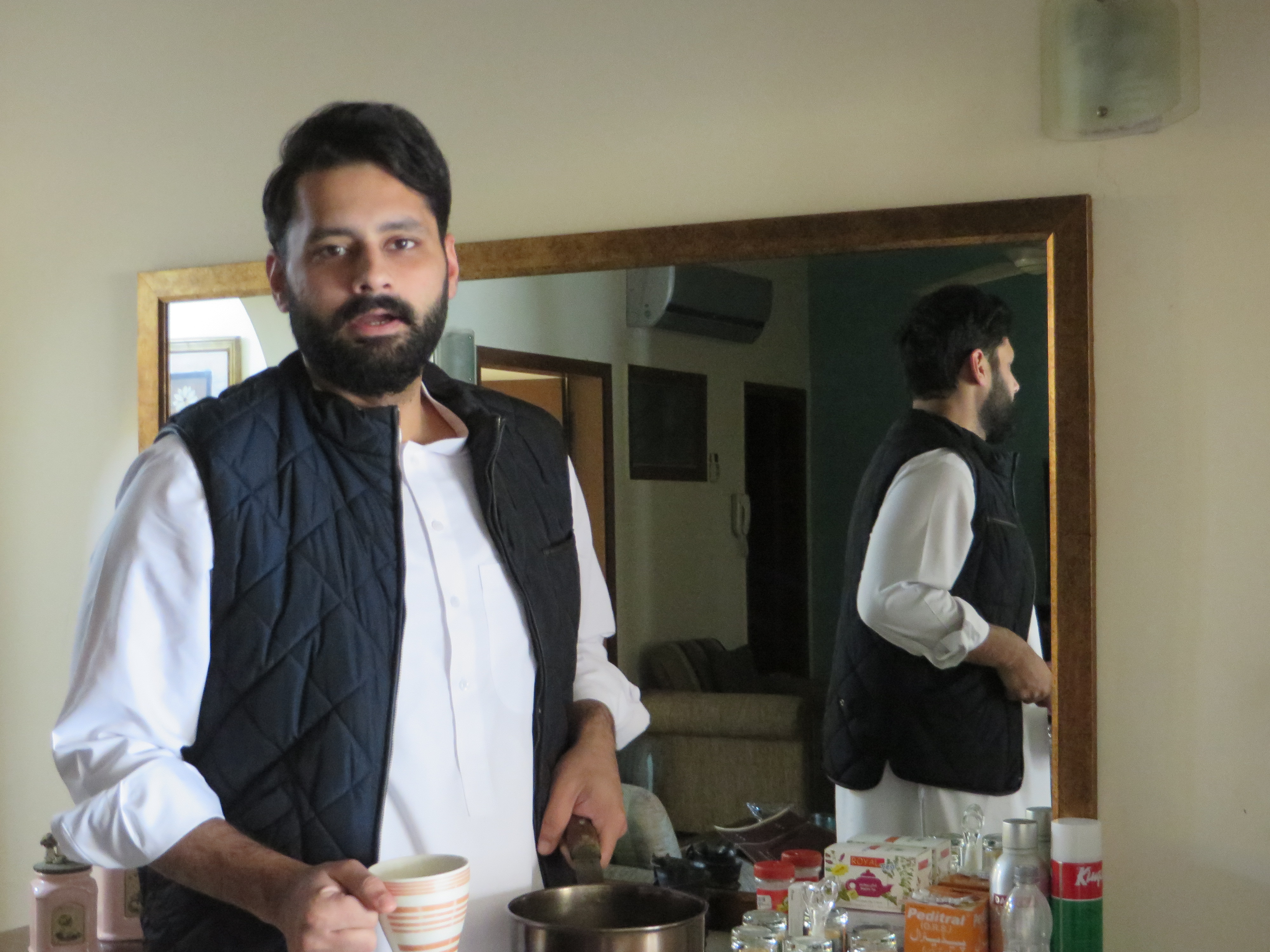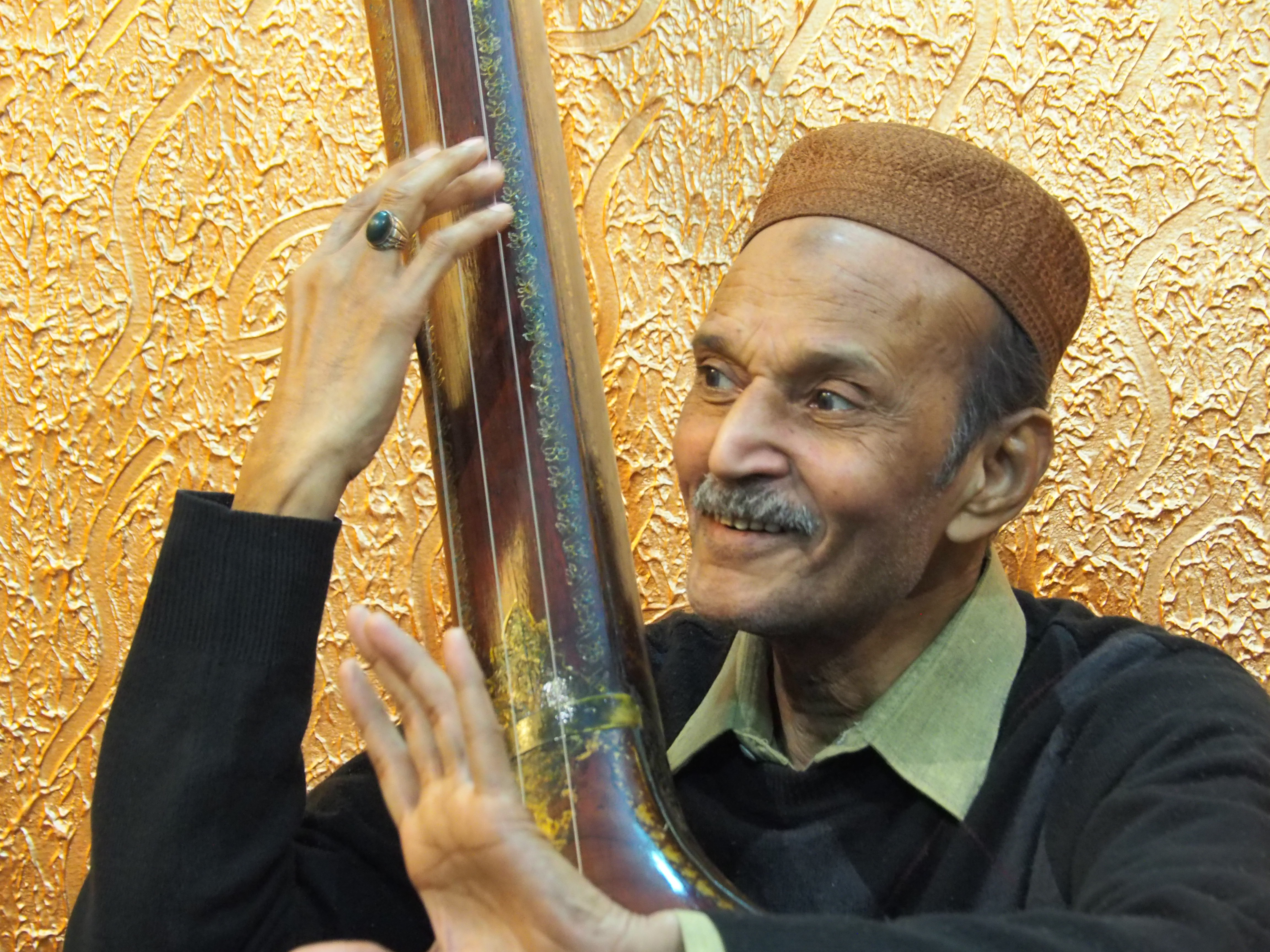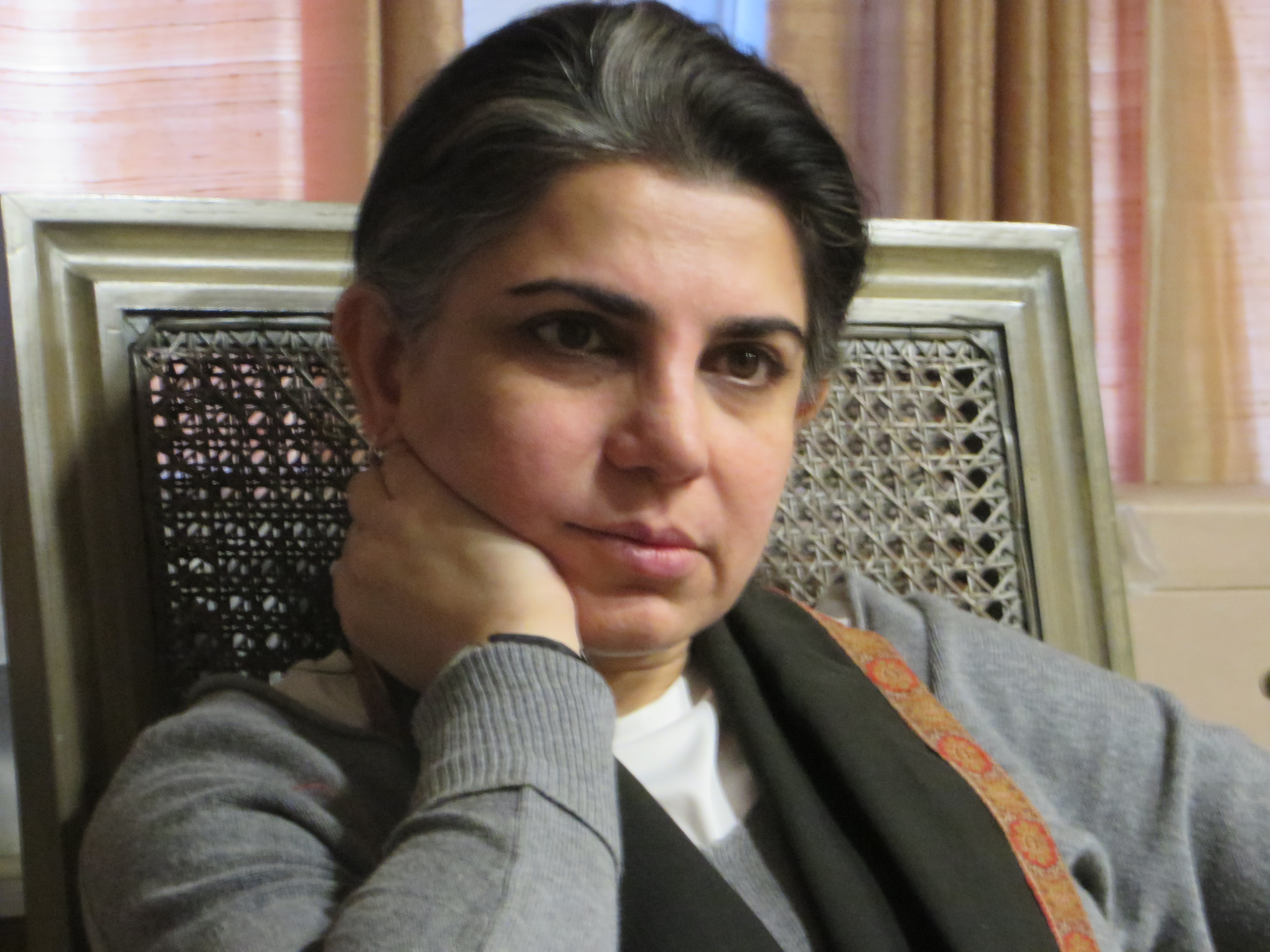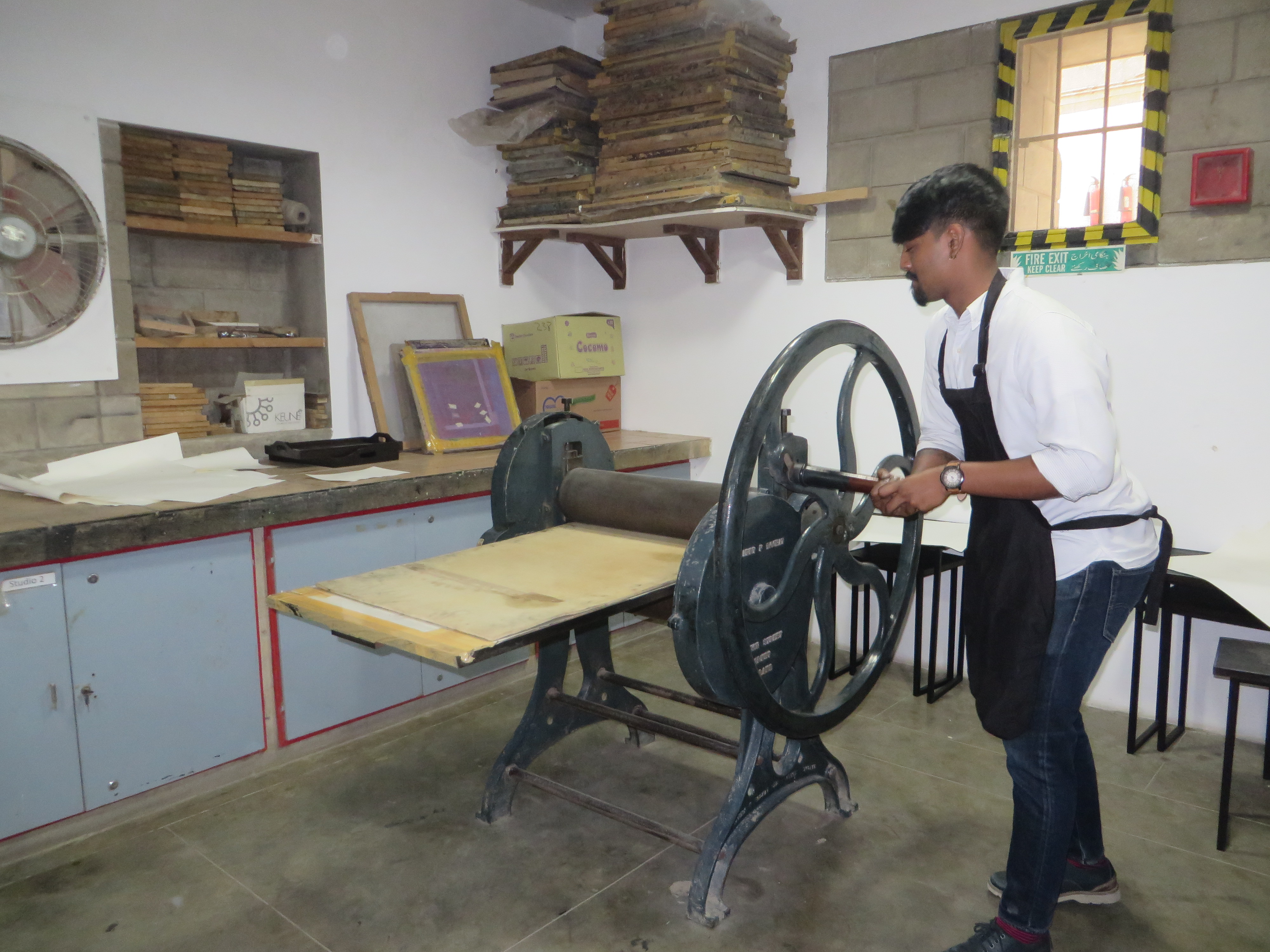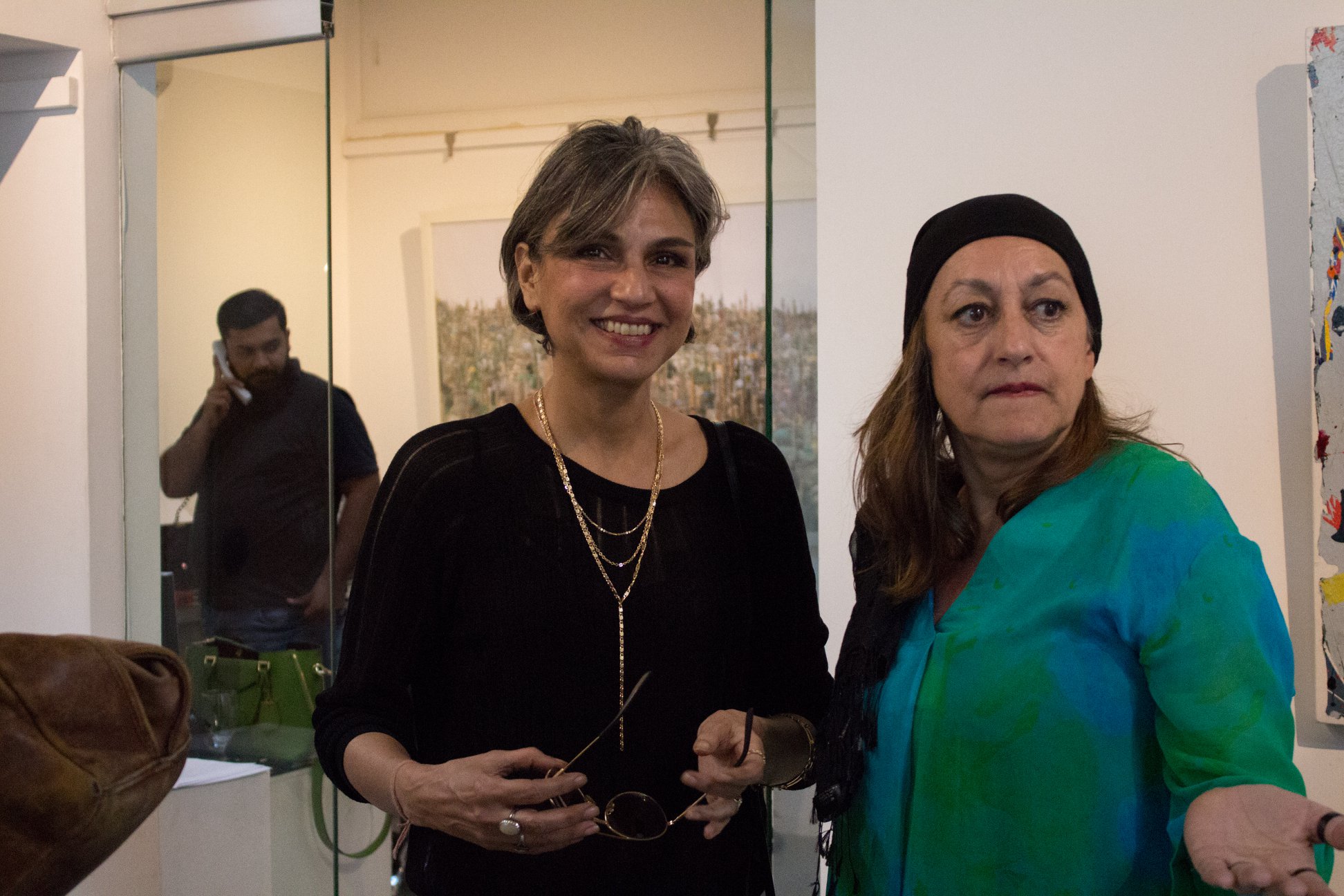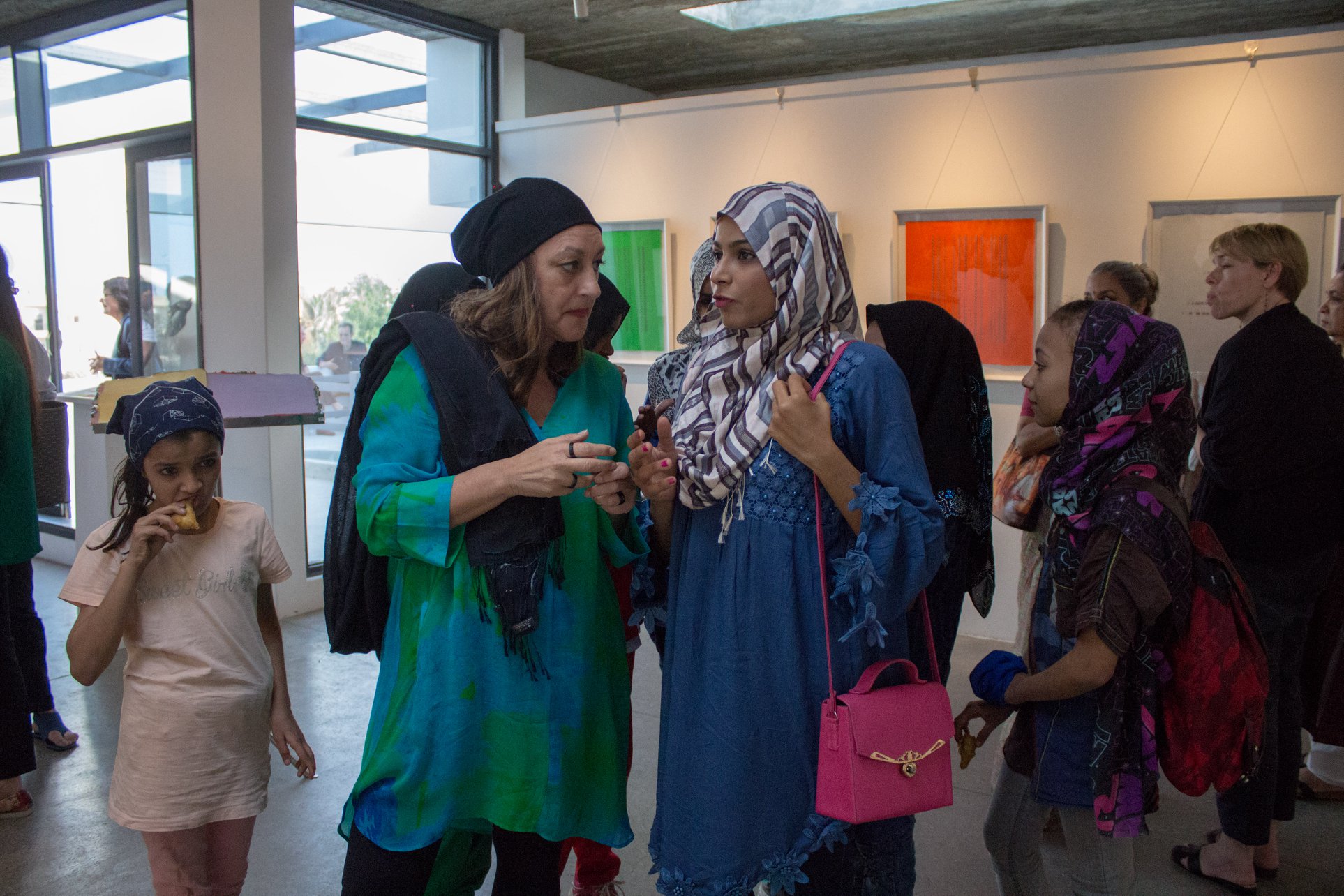Karachidiary
International Artists Residency
January 21 – March 10, 2019
with Bernhard Frue, Christina Zurfluh, Sabine Kienzer & Veronika Illmer
An artist couple, Bernhard Frue and Christina Zurfluh, a journalist Sabine Kienzer, and a graphic designer Veronika Illmer, of similar age and middle European cultural background visit Pakistan for the first time. In Karachi we meet in a situation characterised by relatively unknown religious, political, cultural and geographical realities. The group visited 24 locations/encounters recommended by people living in Pakistan and created a blog reflecting their 24 days visits in Karachi. They interviewed and met many people including, Aquila Ismail, Karamat Ali, Marvi Mazhar, Mohammad Ahmed Shah, Sharmeen Obaid Chinoy, Asma Mundrawala, Khurram Kasim, Sonya Battla, Sheema Kirmani, Girls at Dhaba, Ustad Sami & sons, Atiya Khan, Nurayah Nabi, Noorjehan Bilgrami, Sarah Bilgrami, Rasikh Ismail, Lyari girls boxing team, Nasser Jaffer, Nafees, Rumana Hussain, Jibran Nasir, Adeela Suleman, Amin Gulgee & Sameera Raja.
The show, Karachi Diary was hosted by Vasl Artists’ Association at Canvas Gallery on February 26, 2019. The show displays reflections of the city, Karachi, through the time frame of the seven weeks within which the artists-in-residence have met various individuals, visited different sites and responded to them.
Bernhard Frue
Bernhard Frue applies fragments of the surveillances of his environment into his work. He observes the unseen, the overlooked and the unnoticed. What looks like an unusual serendipity turns out to be a thorough investigation on purpose. He uses different digital media to transform the photographical material – or rather found footage – into an artistic body of work. Language is used as a material as well and with a similar approach, carried to the extreme when it comes to titles as part of the work and the method to be revealed.Various awards have invited him to work and display in Tokyo, Hamburg, Mexico City, Nice, Paris and New York. He has won several awards and exhibited his work extensively in Austria as well as internationally in solo and group shows.
Christina Zurfluh
Christina Zurfluh’s way to handle colour is a very intensive and excessive approach in making her paintings appear more like objects of colour. Due to multiple layers of colour there is a lot of weight in the images which can be seen and sensed, and describe her pictures literally as a volume of work. Zurfluh’s haptic between the images she produces and the huge amount of colour she uses questions the genres between painting and sculpture. Zurfluh invented her own technique: paints often without brush and rather uses a stick or when it comes to the extreme, she paints with a hammer.Christina Zurfluh was on the board of the Secession, Vienna, and has won several awards and exhibited her work extensively in Austria as well as abroad in solo and in group shows.Scholarships have assisted her in working and exhibiting in Switzerland, Mexico, UnitedStates, Romania and Italy.
Sabine Kienzer
Since 2003 I work as a free lance journalist and cultural manager in the field of fine arts with a special emphasis on intermediation. On this basis all my projects are planned and executed with the goal to permanently redefine culture as a term consisting of the values, beliefs and norms which influence the behaviour of people. My current projects are presentations of artist talks, the exhibition series art & function and the editorship of splace magazine – the digital art magazine of art university Linz. The colloboration with two artist is a new professional enlargement for me. Its taking place in Pakistan is an intentional part of ephemeroptera – a Karachi diarys’ conceptual formulation.
Veronika Illmer
“What do we understand when we look? Do signs speak a language? Why does the Urdu alphabet touch my heart although I can’t read it? Why do berber-tribes in the moroccan Atlas use the same kind of pattern as people in the mountains of Tyrol? Is there a new global language determined by logos, icons, emoticons, trademarks, codes and coding and can we read it the same way no matter what our cultural and aesthetic identity is?Working more than 20 years as art-director for magazines and newspapers the visual aspects of communication are in my focus. I’m looking out for signs, patterns and maybe answers.”
